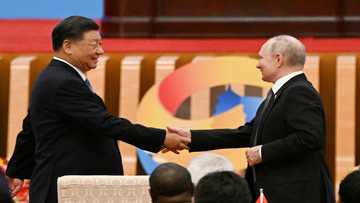Russia withdraws new ruble note after church complaint

Source: AFP
PAY ATTENTION: Be the first to follow YEN.com.gh on Threads! Click here!
Russia's central bank halted the circulation of a new 1,000 ruble note Wednesday after Orthodox priests complained that the image of a church dome lacked a cross, even though it does not have one in real life.
The influence of the Russian Orthodox Church has grown significantly under President Vladimir Putin.
"Currently a decision was taken to stop the production of the notes," the central bank said in a rare U-turn.
"It did not enter widespread circulation."
The bank had presented new designs of the 1,000 and 5,000 ruble notes earlier this week.
One of them featured two religious sites in the majority-Muslim Tatarstan republic: a minaret with an Islamic crescent moon and an Orthodox church with a dome that did not have a cross on it.
Both are inside the Kazan Kremlin, in Tatarstan's capital.
The 17th century church's cross was removed by Bolsheviks after the 1917 revolution. The building now serves as a state museum.
But the lack of the cross quickly drew the ire of Orthodox clerics.
Priest Pavel Ostrovsky said on the Telegram messaging service that the bill was either the result of "the stupidity of the designers" or a "deliberate provocation" by the "followers of Islam" in Tatarstan.
The celebrity priest, who has 174,000 followers on Telegram, said "there was no difference what the building looks like in real life" as most Russians do not know its history.
After the bank removed the note, the church welcomed the decision as "very correct."
Its spokesman Vladimir Legoyda said the Orthodox cross "which personifies the religious and cultural identity of the majority of our citizens, is a natural part of the state symbols of our country."
Ties between church and state in Russia have become more closely intertwined in recent years.
Orthodox leader Patriarch Kirill has most recently sanctified the Kremlin's offensive in Ukraine.
During a prayer service in Moscow's main cathedral Wednesday, Kirill praised Russia's nuclear weapons, which he said were created "under the protection" of a saint.
New feature: Сheck out news that is picked for YOU ➡️ click on “Recommended for you” and enjoy!
Source: AFP



